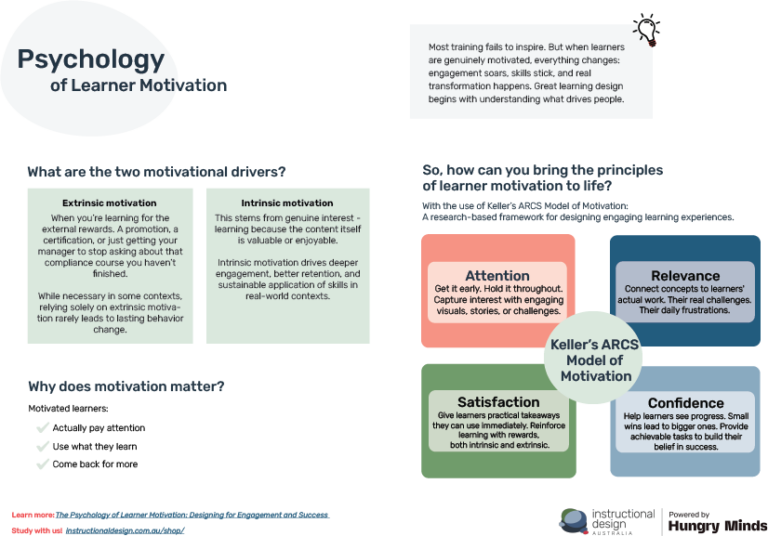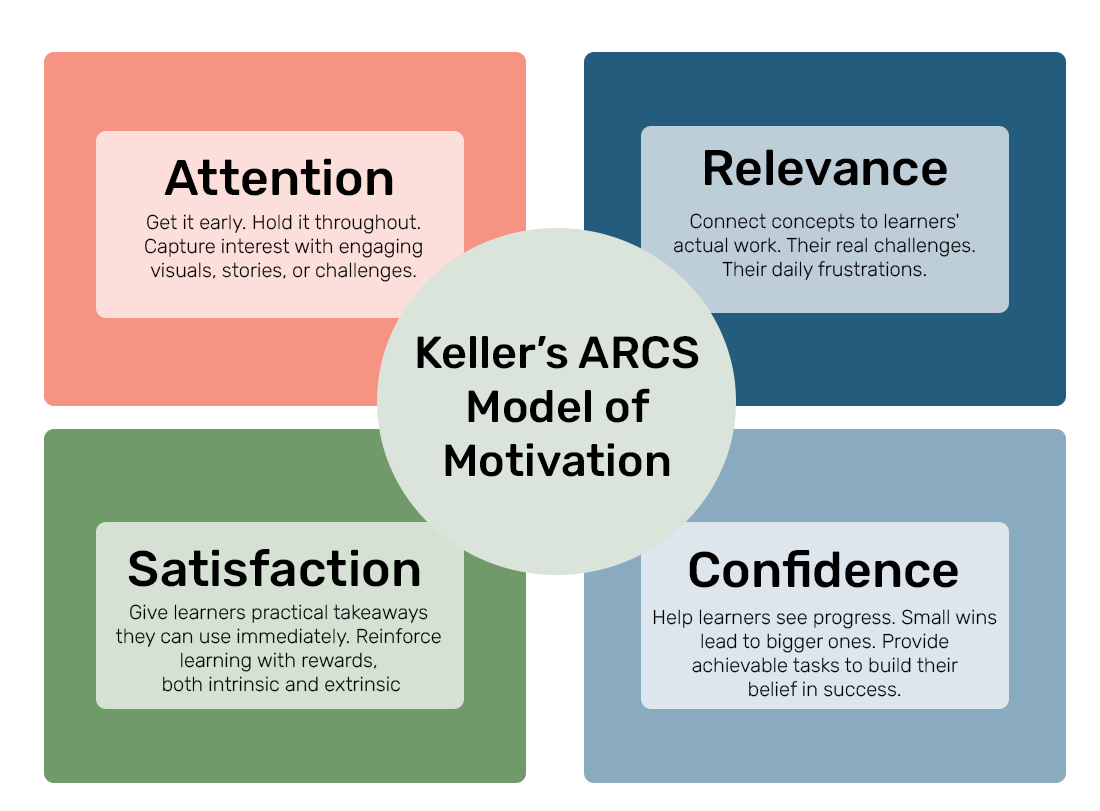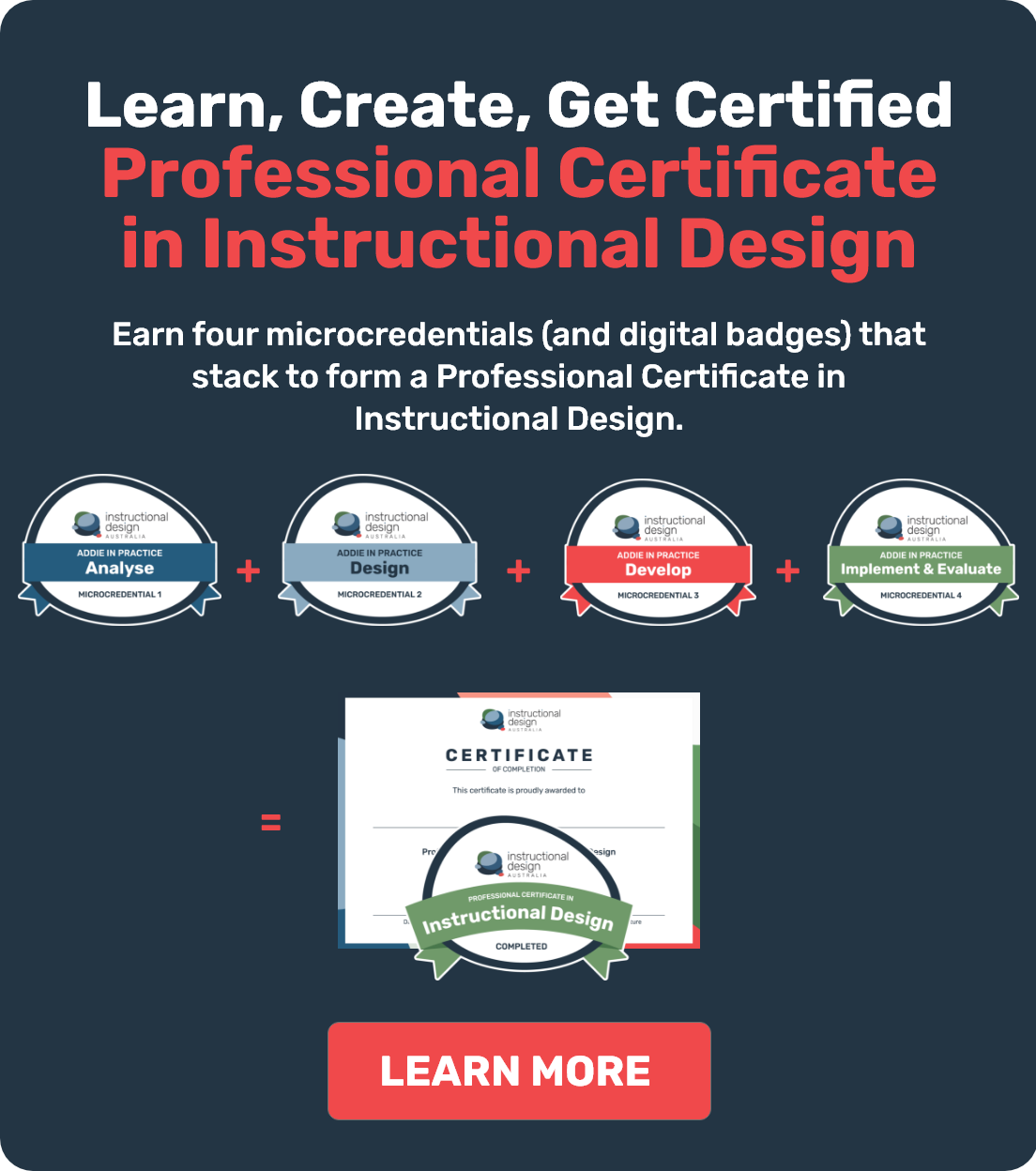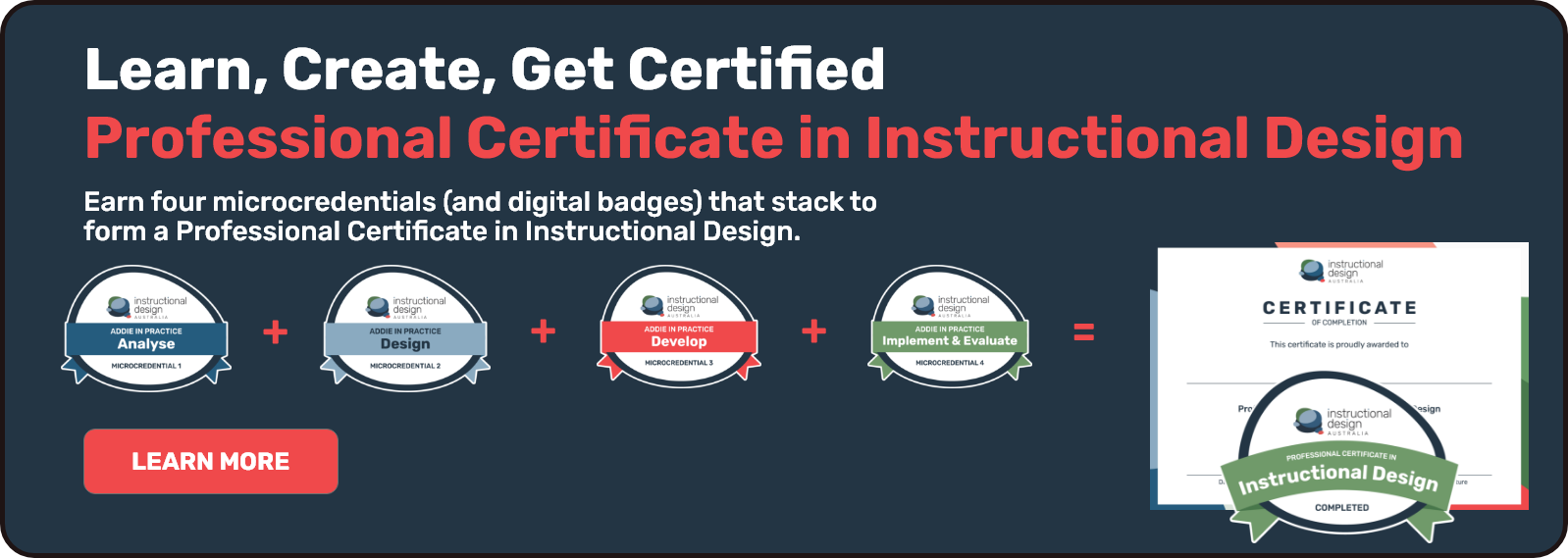The Psychology of Learner Motivation: Designing for Engagement and Success
FREE download
Complete the form to download a quick reference guide (QRG) for creating effective learning outcomes using Psychology of Learner Motivation.

Most workplace training feels like an endurance sport. One where everyone’s competing to look busy while mentally planning their weekend. But when learning clicks – when people are genuinely into it – everything changes.
The difference? It’s not better slides or fancier tech (while that definitely does help!). It’s motivation.
Understanding What Makes People Tick
Psychologists break motivation into two categories:
- Intrinsic Motivation: This is pure interest – learning because something genuinely fascinates you. It’s what drives people to dive deep into topics during their free time, experiment with new techniques, or master skills simply because they find them interesting. No external rewards needed. Just curiosity and the satisfaction of understanding something new.
- Extrinsic Motivation: When you’re learning for the external rewards. A promotion, a certification, or just getting your manager to stop asking about that compliance course you haven’t finished.
Why Motivation Makes or Breaks Training
The data backs this up: motivated learners retain 30% more information (Deci & Ryan, 2000). But more importantly, they:
- Actually pay attention
- Use what they learn
- Come back for more
Getting People to Care
So, how can you bring the principles of learner motivation to life? Here are some practical strategies:
- Tap into Intrinsic Motivation
- Make it Matter Now: Not “this will help your career someday.” More like “this will help you handle that project meeting tomorrow.”
- Build Autonomy: Give learners choices, whether it’s picking their modules or deciding how to demonstrate their understanding.
- Add Some Challenge: People like getting better at things. Give them opportunities to prove it.
- Leverage Extrinsic Motivation
- Incorporate Gamification: Points, badges, and leaderboards can drive healthy competition and encourage course completion.
- Offer Tangible Rewards: Certifications or public recognition go a long way in motivating some learners.
- Design for Immediate Wins
- Quick Wins: Break your content into small, achievable milestones to give learners a sense of progress early on.
- Feedback Loops: Timely, constructive feedback keeps learners on track and motivated to continue.
- Apply the ARCS Model
Developed by John Keller, the ARCS Model is a framework for motivational design that focuses on:
- Attention: Get it early. Hold it throughout. Capture interest with engaging visuals, stories, or challenges.
- Relevance: Connect it to their actual work. Their real challenges. Their daily frustrations.
- Confidence: Help them see progress. Small wins lead to bigger ones. Provide achievable tasks to build their belief in success.
- Satisfaction: Give them practical takeaways they can use immediately. Reinforce learning with rewards, both intrinsic and extrinsic (Keller, 1987).

Tips for Enhancing Learner Motivation
- Set Clear Goals: Every piece of training should answer “What’s in it for me?” clearly and honestly.
- Design Intuitive Interfaces: Frustration kills motivation. Make sure your course navigation is seamless.
- Use Storytelling: Stories captivate. Weave a compelling narrative that pulls learners through the material.
- Incorporate Peer Learning: Add discussions that matter. Not forced group work, but genuine opportunities to learn from colleagues.
- Experiment with Multimedia: Blend different types of content. Not because it’s trendy, but because it works. Videos, infographics, and interactive elements break the monotony and cater to different learning preferences.
Bottom Line
Good training isn’t about tricks or trends. It’s about understanding what makes people want to learn, then delivering on that promise.
Want engagement? Make it relevant. Make it doable. Make it worth their time.
References
- Deci, E. L., & Ryan, R. M. (2000). Self-Determination Theory and the Facilitation of Intrinsic Motivation, Social Development, and Well-Being. American Psychologist. Available here; https://psycnet.apa.org/doiLanding?doi=10.1037%2F0003-066X.55.1.68
- Keller, J. M. (1987). Development and Use of the ARCS Model of Instructional Design. Journal of Instructional Development. Available here: https://link.springer.com/article/10.1007/BF02905780
- Center for Excellence in Teaching and Learning. (n.d.). Instructional Design for Motivation. Oakland University. Available here: https://oakland.edu/Assets/Oakland/cetl/files-and-documents/TeachingTips/InstructionalDesignforMotivation.pdf



